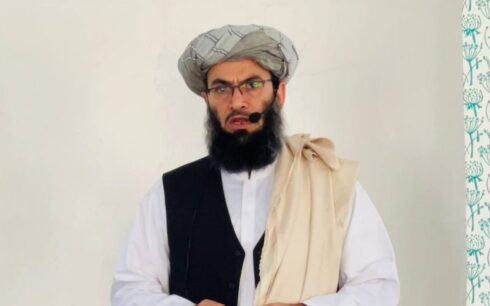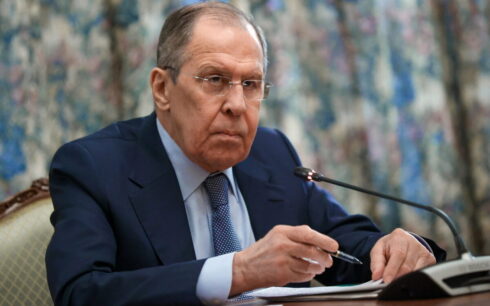An analysis by the International Development Law Organization (IDLO), a Rome-based organization with yeras of experience in Afghanistan, reveals that the final version of the Taliban’s new law on public behavior is significantly more stringent than the draft version.
The final law, which underscores the Taliban’s centralized control, was ratified by the Taliban leader on August 21.
IDLO, which has extensive experience in Afghanistan, assessed two versions of the Taliban’s vice and virtue law: an initial draft that was then submitted to the Taliban-run Ministry of Justice on 11 January 2023 for scrutiny and review, and a final version that was submitted on 29 March 2023 by the justice ministry to the Taliban’s Independent Commission for Final Review of Legislative Document. Following the final review, it was sent to the Taliban supreme leader for endorsement which happened on 9 July 2024. The Taliban-run Justice Ministry published the law on 21 August 2024.
Structural Changes in the Law
The finalized version of the law is condensed, with the number of chapters reduced from six to four and articles from 42 to 35. Notably, Chapter 4, which in the draft version addressed the hearing of citizen complaints, has been entirely removed, as a separate law now covers this aspect.
Additionally, the law’s introduction has replaced what was originally Chapter 1 in the draft, reflecting a reorganization of the legal framework.
Key Revisions in Definitions and Authority
Privacy and Hijab Definitions: The definition of “privacy,” which was included in the draft version, has been excluded from the final law. Moreover, the definition of “hijab” has been expanded. While the draft described hijab as a garment covering a woman’s entire body, the final version explicitly includes the covering of the face as a requirement.
Authority to Enforce: The draft version granted enforcement authority exclusively to the Muhtasibs, with others only permitted to promote virtue and prevent vice through verbal means. In the final version, this authority is broadened to include all individuals in positions of power, making it an obligation for Muhtasibs and an authority for others.
Jurisdiction of Sharia: Article 6 of the draft specified that the promotion of virtue and prevention of vice should align with Hanafi jurisprudence. The final version expands this, stating that it should align with both Sharia and Hanafi jurisprudence, thus broadening the religious scope under which the law operates.
Tighter Regulations and New Prohibitions
Removal of Exceptions for Muhtasibs: The draft allowed exceptions for the righteousness required of Muhtasibs, but these have been removed in the final law. Article 12 of the draft, which stated that vices must not be subject to interpretation, has also been eliminated, granting the Taliban’s interpretation as the sole valid one.
New Restrictions on Clothing and Behavior: Article 13, which addresses the issue of women’s hijab, was absent in the draft but has been added to the final version. A new article on men’s clothing (Article 14) has also been introduced. The final law removes Article 11 of the draft, which listed situations where Muhtasibs were required to refer offenders to their superiors, including cases where customs could not be corrected through advice alone.
Broader Powers for Religious Oversight: The final version of the law attempts to prevent the Ministry for the Promotion of Virtue and Prevention of Vice (MPVPV) from supervising other public institutions, likely because religious guidance departments have been established within each government institution. This led to the removal of Articles 14 to 17, 19, 20, and 40 from the draft version, which had granted the Ministry authority to intervene in other institutions’ operations.
Media and Cultural Practices Under Stricter Control
Media Content Restrictions: In the draft version, media outlets were required to avoid content against Sharia, Islamic culture, social ethics, and sound customs. The final version narrows this to content against Sharia and Mazhab (Jurisprudence school), implicitly referring to Hanafi jurisprudence.
In the draft version, it was explicitly stated that the media should refrain from broadcasting programs that depict companions of the Prophet, and their followers. However, in the new version, the media are prohibited from publishing content that includes “images of living beings.”
Furthermore, while the draft prohibited media from broadcasting depictions of the Prophet’s companions and their followers, the final law bans any images of living beings, a move that could force the closure of visual media outlets.
New Cultural Bans: The final version expands cultural restrictions. While the draft banned Muslims from celebrating certain events like Christmas and Nowruz, the new law adds Yalda Night, the use of fireworks, and other celebrations that lack a basis in Sharia. This vague language likely targets events such as Teachers’ Day, Mother’s Day, and Valentine’s Day.
Prohibition of Visual Depictions: A similar amendment appears in Article 22, Clause 9 of the final law, which now classifies “preparing and watching images and videos of living beings” on devices as a vice. The draft had only prohibited broadcasting, watching, and listening to music and obscene films.
New Regulations on Marriages and Transportation: In the final law, Article 22 introduces a prohibition on Nikah Mut’ah (temporary marriage), expanding the draft’s focus on zina (adultery) to include this practice. The new law also prohibits sodomy, even between spouses, and introduces a ban on child and women sexual abuse, whereas the draft only mentioned child sexual abuse.
In terms of transportation, the draft version restricted drivers from transporting women without a male guardian (Mahram) on journeys longer than 78 kilometers. The final version removes the distance restriction entirely, prohibiting such transport on any journey.
Expanded Religious Oversight and Legal Authority
Consultations and Authority: The final version of Article 28, which corresponds to Article 35 of the draft, mandates that the Ministry consult with religious rather than ethnic or social figures, with the objectives of promoting virtue and eliminating vice. The broader goals of strengthening relations between the people and the Emirate, winning hearts, and enhancing dignity, present in the draft, have been removed.
Centralized Legislative Power: Article 34 of the final law, replacing Article 41 of the draft, requires that any regulations drafted by the Ministry be approved by the Taliban leader, indicating that legislative authority is centralized exclusively under the Taliban’s leadership. This clause also annuls any laws not endorsed by the leader, effectively repealing laws from the previous regime.
The law has sparked significant controversy both within Afghanistan and internationally. Critics argue that the final version further consolidates the Taliban’s authoritarian rule and imposes harsh restrictions on Afghan society, particularly women and the media.





